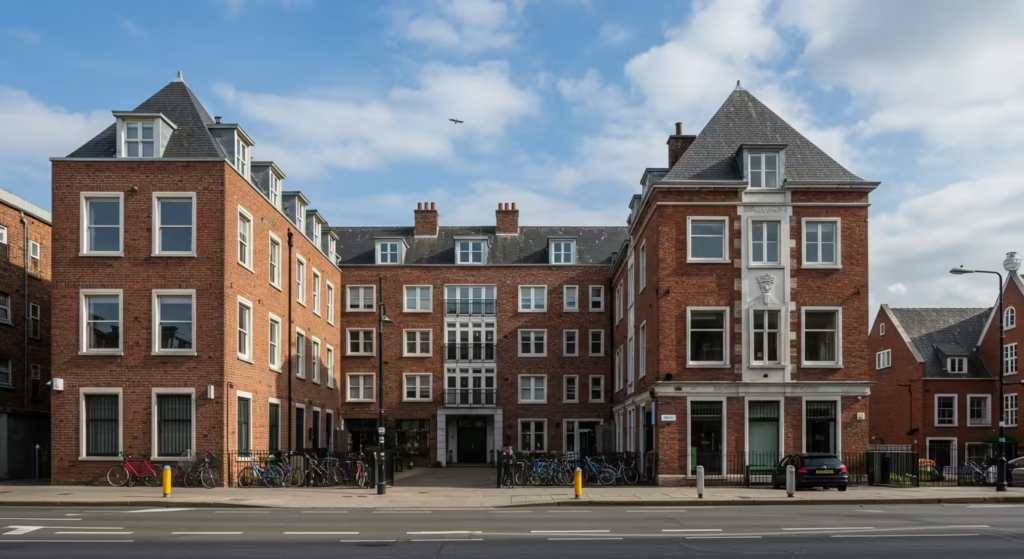Homeowners and developers across the UK often face one important question before starting a project: do I need planning permission, or can I rely on permitted development rights? Getting this wrong can lead to costly delays, enforcement notices, and even problems selling your property later. Permitted development rights, also known as PDRs, were introduced to give people more freedom to improve or adapt their homes without going through the full planning process. They are an essential part of UK planning law, but they come with clear rules and restrictions that must be respected. Many property owners assume that permitted development allows unrestricted changes, but that is not the case. Understanding what falls under these rights and when you still need approval is crucial to making safe, legal, and value-adding improvements to your home. Our well researched content explains permitted development rights in detail, outlines the latest updates, and shows how you can check if your project qualifies.
What Are Permitted Development Rights?
Permitted development rights are legal allowances under the General Permitted Development Order (GPDO) that let homeowners and certain developers carry out specific works without applying for full planning permission. The government introduced these rights to simplify improvements such as modest extensions, loft conversions, or internal changes that have minimal impact on the surrounding area. For example, if you want to add a small single-storey rear extension or install solar panels on your roof, you may be able to do so under permitted development.
The purpose of these rights is to strike a balance between flexibility for homeowners and protecting wider community interests. They reduce the workload for planning authorities while giving property owners more control over their homes. However, PDRs are not unlimited. They come with strict limits on height, size, materials, and design. For instance, while a loft conversion may be allowed, exceeding volume limits or altering the roof shape beyond certain points would trigger a need for planning permission.
It’s important to remember that permitted development applies differently to houses, flats, and commercial buildings. In many cases, flats and listed properties have little or no permitted development allowance. This means every project must be checked carefully before work begins. Seeking professional guidance or applying for a Lawful Development Certificate can provide peace of mind that your plans fall within the law.
What You Can Do Under Permitted Development Rights

Permitted development rights cover a wide range of home improvement and conversion works. The most common examples include:
- Single-storey rear extensions up to a certain depth, often 3–6 metres depending on the property type.
- Two-storey extensions with strict height and distance limits.
- Loft conversions provided they remain within set volume allowances (40m³ for terraced houses and 50m³ for detached and semi-detached homes).
- Garage conversions into habitable rooms, provided they don’t alter the building’s footprint significantly.
- Porches added to the front of a property within specific size limits.
- Solar panels installed on roofs that do not extend excessively.
- Outbuildings such as garden offices or sheds, as long as they do not cover more than half the garden area.
These rights allow homeowners to adapt their living spaces without a full planning application, which can save time and fees. However, every permitted development right comes with detailed conditions. For example, extensions must use similar materials to the existing house, and outbuildings cannot be placed forward of the principal elevation.
It’s also important to note that larger projects, like rear extensions up to 8 metres deep, require a prior approval process, where the council notifies neighbours and checks the impact before confirming permission. This step protects both property owners and the wider community by ensuring developments remain fair and reasonable.
Because these rules can be technical, many homeowners mistakenly assume they are covered by PDRs, only to face rejection later. Checking carefully before starting work is the safest way to avoid issues.
Conditions and Restrictions That Apply
While permitted development rights give property owners greater freedom to improve their homes, they are never unrestricted. Every project must comply with the permitted development rules in England, which set out clear size, height, and design limits. For example, single-storey rear extensions are capped at 3 metres for terraced houses and 4 metres for detached houses unless the larger home extension scheme (via prior approval) applies. Two-storey extensions must be at the rear of the property, not exceed 3 metres beyond the original wall, and sit no closer than 7 metres from the rear boundary.
Materials are another key restriction. The external finish must be similar in appearance to the existing house to ensure consistency in design. Roof extensions must not rise higher than the existing ridge line, and they cannot extend beyond the plane of the principal elevation. Outbuildings must not cover more than 50% of the garden area, nor can they be higher than 2.5 metres if close to the boundary.
Importantly, stricter rules apply in designated areas such as national parks, conservation zones, and Areas of Outstanding Natural Beauty. In these locations, permitted development rights are either heavily restricted or removed entirely to protect heritage and landscape value. For instance, roof extensions and side extensions are often excluded in conservation areas. Homeowners in these areas must carefully check with their local planning authority before starting work.
Article 4 Directions: When Rights Are Removed

An Article 4 direction is a legal measure used by local planning authorities to withdraw certain permitted development rights in a specific area. These directions are often applied in heritage or conservation zones to protect architectural character and prevent unsympathetic changes. For example, in a Victorian terrace within a conservation area, an Article 4 direction might prevent the replacement of traditional sash windows with modern uPVC alternatives under permitted development.
Article 4 does not remove all permitted development rights but instead targets specific classes of development. Homeowners affected by an Article 4 direction must apply for full planning permission for works that would otherwise be permitted. Typical restrictions include rear extensions, changes to facades, roof alterations, or the addition of outbuildings.
These directions are widely used in London boroughs and historic towns where uniformity in design is considered vital. The House of Commons Library notes that Article 4 is becoming more common as local councils use it to balance development with heritage preservation. For homeowners, this means it is essential to check the planning history of your property. Even if the GPDO allows your proposed extension, an Article 4 direction may overrule it.
The Prior Approval Process
Some permitted development projects require a step called prior approval before they can proceed. This process applies to larger rear extensions (up to 6 metres for terraced/semi-detached houses and 8 metres for detached homes) and certain changes of use, such as converting agricultural buildings into dwellings.
The prior approval process is designed to let councils and neighbours review the proposal without requiring a full planning application. Homeowners must submit detailed plans, and the council has 42 days to make a decision. During this time, neighbours are notified and can raise objections if they believe the development impacts their property, such as by blocking light or reducing privacy.
If no objections are received, or if the council considers the concerns minor, the project is approved under permitted development. However, if significant objections arise, the council can refuse prior approval, forcing the homeowner to submit a full planning application.
This process provides flexibility for larger projects while still protecting community interests. For many homeowners, prior approval is quicker and less costly than full planning permission, but it still requires careful planning and compliance with the GPDO rules.
Permitted Development vs Planning Permission
Many homeowners confuse permitted development rights with planning permission, but the two are very different. Permitted development is a set of national rights that allow certain works without applying to the council, provided conditions are met. Planning permission, on the other hand, requires a formal application, neighbour consultation, and assessment by the planning authority against local and national policy.
The main advantage of permitted development is speed and reduced bureaucracy. Small-scale projects like porches, modest loft conversions, or single-storey rear extensions often qualify under PD, saving months of waiting time. However, planning permission is still required if your project exceeds PD limits, falls in a conservation area, or involves a listed building.
For example, adding a two-storey side extension would almost always need planning permission, as would altering the front elevation of a property in a designated area. Similarly, commercial developments or changes of use beyond those specified in the GPDO cannot proceed under PD.
In short, permitted development offers flexibility but has clear boundaries. Homeowners should weigh the benefits of avoiding planning permission against the risks of exceeding the rules, which can lead to enforcement action. When in doubt, seeking confirmation from the local authority or an architectural professional is the safest path.
Protected or Excluded Developments
Not every property benefits from permitted development rights. Certain developments are excluded from permitted development entirely to protect heritage and community standards.
- Listed buildings: Any external alteration, extension, or demolition requires listed building consent, even if similar works would fall under PD elsewhere.
- Flats and maisonettes: Permitted development rights generally do not apply, meaning any extension or alteration usually requires planning permission.
- Designated areas: Conservation zones, national parks, Areas of Outstanding Natural Beauty, and World Heritage Sites often have tighter restrictions or no PD rights at all.
- Commercial conversions: While some changes of use (such as offices to residential) may qualify under PD, many are excluded, particularly in protected areas or where Article 4 directions apply.
Another limitation is that once a property has been extended under permitted development, further rights can be restricted. For instance, if a large rear extension has already been added, no further extensions may qualify under PD. This prevents cumulative development that could overwhelm the original building.
For homeowners, the key takeaway is that PD is not a guarantee. Always confirm eligibility with the local planning authority or secure a Lawful Development Certificate before proceeding. This document provides legal proof that your project is within the permitted development rules, protecting you against enforcement later.
Recent Updates to Permitted Development Rights
Permitted development rights (PDRs) continue to evolve as the government adapts planning law to meet housing demand and balance rural and urban growth. One of the most notable recent updates is the so-called “Clarkson’s Clause”, which simplifies the process of converting redundant agricultural buildings into residential use. This adjustment aims to support rural housing supply while protecting the countryside from uncontrolled development.
Another major change is the expansion of Class MA permitted development, which allows the conversion of commercial spaces such as offices, shops, and restaurants into residential properties. Initially introduced in 2021, Class MA has since been refined, with updates in 2024–2025 clarifying floor space limits and ensuring new homes meet national space standards. These rules aim to strike a balance between creating more homes and ensuring quality living conditions.
Local councils have been granted greater powers to use Article 4 directions to restrict commercial-to-residential conversions in town centres where they believe housing could harm local employment or retail provision. This highlights the importance of checking both national rules and local planning policies before starting any project.
For homeowners and developers, staying informed on PD rights changes in 2025 is essential. Small adjustments to legislation can affect whether a project qualifies for permitted development or requires full planning permission.
How to Check If Your Project Qualifies as Permitted Development
Knowing whether your project qualifies under permitted development rules can save significant time and money, but the rules are detailed and often misunderstood. The first tool most homeowners use is the official Planning Portal permitted development checker, which provides interactive guidance on extensions, loft conversions, and outbuildings.
For more certainty, applying for a Lawful Development Certificate (LDC) from your local council is strongly recommended. This certificate is legal proof that your proposed work falls within permitted development rights. Without it, even if you build under PD rules, you could face enforcement action if the council later disagrees or if a buyer raises concerns during a property sale.
Local councils can also confirm if your property is in a conservation area, Article 4 zone, or other designated location where rights may be restricted. For complex projects, professional architectural advice ensures that drawings and proposals align with PD requirements.
Ultimately, using a combination of online tools, council checks, and formal certification gives you the strongest protection. For many homeowners, the small upfront cost of securing a certificate of lawful development is well worth avoiding the legal and financial risks of misinterpretation.
Risks of Misusing Permitted Development Rights

While permitted development can streamline projects, misusing PD rights carries significant risks. Councils actively monitor developments, and if your project exceeds permitted limits, they can issue an enforcement notice requiring you to alter or demolish the work. This can be both costly and stressful.
Insurance can also be affected. If your home improvement is later found to be unlawful, insurers may refuse to cover damage claims linked to the alteration. Similarly, selling a property with unauthorised works is difficult. Buyers and solicitors will request planning documents, and the absence of a Lawful Development Certificate may delay or even collapse the sale.
Another common risk is misunderstanding the rules in Article 4 areas or conservation zones. Even small alterations, like changing windows or adding roof lights, could breach planning control if rights have been withdrawn locally.
These risks highlight why proper documentation and professional oversight are so important. Permitted development is a helpful tool, but only if applied correctly. Misuse can lead to legal disputes, financial loss, and reputational damage for both homeowners and developers.
How Formi Architecture Supports Permitted Development Projects
At Formi Architecture, we specialise in helping clients navigate permitted development with confidence. Our services include:
- Expert advice on whether your project qualifies under permitted development rules.
- Accurate drawings that comply with PD limits and building regulations.
- Preparation and submission of prior approval requests, where larger extensions or Class MA conversions are involved.
- Guidance on Article 4 directions and other local restrictions that may affect your project.
By combining detailed knowledge of the law with hands-on project experience, we ensure your home improvement proceeds smoothly and legally. Whether you’re planning a modest extension or a more ambitious conversion, our team provides the technical clarity and council liaison needed for success.
Our goal is to give clients peace of mind, knowing that every stage of their project is managed in compliance with planning law and supported by professional expertise.
Frequently Asked Questions (FAQs)
What is permitted development?
Permitted development is a set of national planning rights that allow certain building works and changes of use without needing full planning permission, provided conditions and restrictions are met.
How deep can you extend under PD?
For single-storey rear extensions, PD typically allows 3 metres for terraced houses and 4 metres for detached houses. Larger extensions of 6–8 metres are possible with prior approval.
What is prior approval and when is it needed?
Prior approval is a simplified council process required for some larger projects, such as rear extensions beyond standard PD limits or certain commercial-to-residential conversions.
How do I check if I’m subject to an Article 4 direction?
You can check with your local planning authority or use the Planning Portal. If your property falls within an Article 4 area, certain PD rights will be withdrawn.
Can I sell my home if I’ve used PD rights?
Yes, but you should have a Lawful Development Certificate to prove the works were lawful. Without this, sales can be delayed or blocked due to legal uncertainty.
Suggestion – Get Your Home Improvement Right from the Start
Permitted development rights provide a valuable route for homeowners to extend and adapt their properties without going through a full planning application. However, the rules are detailed, and restrictions in designated areas or through Article 4 directions mean not every project qualifies. Misuse can result in enforcement action, financial penalties, and difficulties when selling your property.
The safest way to approach permitted development is to plan carefully, check eligibility through official channels, and seek professional advice where needed. At Formi Architecture, we help homeowners unlock the benefits of permitted development while avoiding the pitfalls. From drawings and certificates to prior approval submissions, we provide the guidance needed to ensure your project complies with the law.
If you’re considering a home improvement, extension, or conversion under permitted development rights, contact Formi Architecture today to start your project on the right track.






